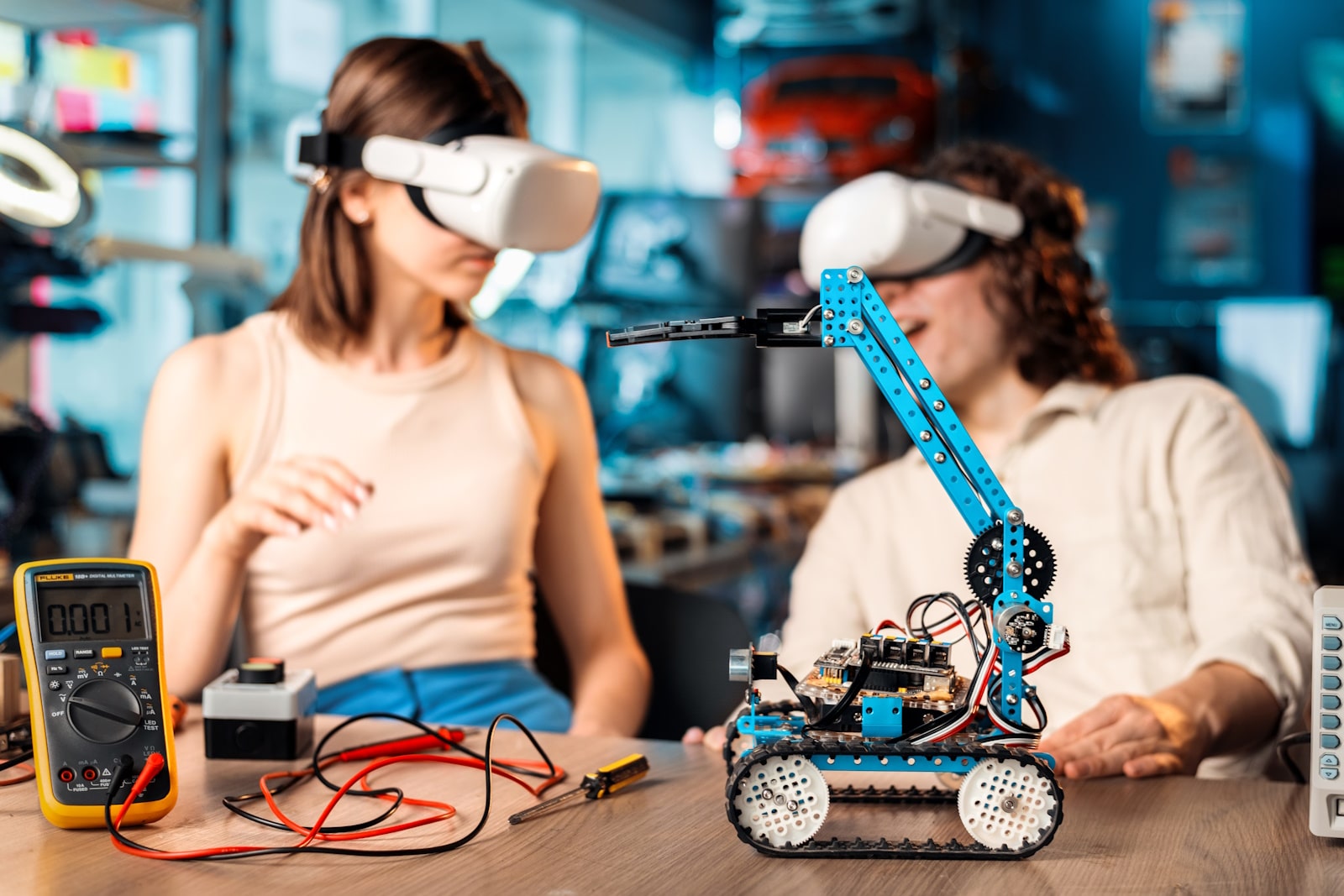
Future-Proofing LMS with AR and VR for STEM Education
South Africa faces significant hurdles in strengthening its science, technology, engineering, and mathematics (STEM) education, with high dropout rates and limited resources posing persistent challenges. Approximately 50% of first-year university students and 40-60% of Grade 10-12 learners abandon STEM subjects, while only 51% of those starting Grade 1 in 2013 completed matric in 2024. Amid issues like power outages and uneven internet access, augmented reality (AR) and virtual reality (VR) offer innovative solutions when integrated into a learner management system in South Africa. These technologies can simulate labs, enhance engagement, and ensure equitable access to quality education.
Embedding AR and VR into a Learner Management System in South Africa
Imagine a chemistry lesson where students manipulate 3D molecular structures without a single test tube in sight. This is the promise of AR and VR integration into every learner management system in South Africa. Popular platforms already host courses, but embedding immersive content via custom plugins or application programming interfaces (APIs) elevates them. For instance, developers can create modules that deliver virtual engineering labs, optimised for low-bandwidth networks where average mobile data usage sits at 1.9 GB per month, projected to rise to 8 GB by 2030.
At institutions like Tshwane University of Technology (TUT), where physical lab equipment is often scarce, such integrations allow seamless access to interactive simulations. A 2025 study on augmented virtual reality in South African higher education highlights how these enhancements unify digital dashboards, boosting attendance by enabling offline AR experiences on mobiles. Students at Durban University of Technology have reported smoother navigation between modules, with avatars guiding practical sessions that mimic real-world scenarios.
Technical tweaks, like offline caching for 3D models, ensure compatibility in data-scarce areas. This not only streamlines user experiences but also aligns with the Curriculum and Assessment Policy Statement (CAPS), turning a learner management system in South Africa into hubs of immersive learning. Early adopters note a 180% surge in engagement time, proving that thoughtful integration can overcome bandwidth barriers without overhauling existing setups.
Tackling Resource Shortages in STEM Labs through VR Simulations
In rural areas like Limpopo, many colleges lack the physical labs needed for biology or physics experiments. VR simulations offer a cost-effective alternative, replicating complex setups like microbiology labs. With 62% of BSc students accessing labs but only 36% having functional equipment, these tools bridge critical gaps. Virtual labs reduce setup costs by 70-80% compared to traditional facilities, a vital advantage for underfunded institutions.
A 2025 study in Limpopo’s Grade 10 life sciences classes found VR improved concept understanding and practical skills, such as data recording, with experimental groups showing significant post-test gains and 87% higher motivation. For TVET colleges, where engineering completion rates hover at 40%, VR provides repeatable, risk-free practice. Educators note that these simulations turn theoretical lessons into tangible skills, addressing resource disparities and fostering persistence in STEM.
Lightweight AR for Mobile STEM Learning in Low-Data Zones
Smartphones are widespread among South African students, even in informal settlements like Khayelitsha, making mobile-optimised AR a powerful tool for STEM education. Lightweight AR apps overlay interactive visuals, such as geometry diagrams, on low-cost devices, designed for offline use to bypass high data costs affecting 85% of learners who rely on mobiles for learning.
Gauteng high school pilots show AR-enhanced geometry lessons increase participation through cached models that work without constant connectivity. In KwaZulu-Natal, post-pandemic postgraduate STEM teachers used mobile virtual practicals to overcome lab shortages, improving equity in rural schools via group-sharing features. These apps, with voice-guided interfaces and multilingual support, boost confidence in STEM concepts by 85%, ensuring learner management systems in South Africa leverage widely accessible devices to deliver equitable education.
Equipping Teachers for AR and VR in Learner Management Systems
Many educators face barriers like technophobia or limited digital literacy, but targeted training can unlock AR and VR’s potential in learner management systems in South Africa. At the University of Pretoria, tailored modules combine hands-on VR workshops with CAPS-aligned content to prepare STEM lecturers.
The University of Johannesburg’s MPhil in Virtual and Augmented Reality in STEM Education, launched for 2025, trains science and engineering graduates over one to two years at NQF Level 9, requiring a 65% entry average. A Gauteng Department pilot in disadvantaged schools introduced VR and AR training, enhancing pedagogy and boosting teacher confidence (β=0.489 in adoption readiness). With only 46% of teachers receiving over 40 professional development hours annually, such programmes ensure educators can confidently integrate immersive tools, aligning learner management systems in South Africa with modern teaching demands.
Boosting Engagement and Retention with Immersive Experiences
High dropout rates undermine STEM programmes, but AR and VR within learner management systems in South Africa can boost motivation and retention. Immersive labs increase engagement time by 82%, with pass rates improving as students interact deeply with content.
Western Cape TVET pilots demonstrate VR’s impact, reducing dropouts by making engineering concepts tangible, with retention scores of 4.35 versus 3.62 in control groups. A 2025 analysis found 85% of AR/VR users reported greater motivation, and 70% credited interactivity for up to 80% retention after a year. At Vaal University of Technology, a 2025 VR pilot for 500 remote learners yielded 21.4% post-test gains in science, addressing the 50% graduation gap in NSFAS-funded programmes. These tools sustain interest, helping students stay on track to graduate.
Scaling Through Policy and Frameworks
Widespread adoption hinges on robust policies from the Department of Higher Education and Training (DHET). The 2025-2030 Strategic Plan coordinates regulatory frameworks for university education, yet underfunding STEM targets persists, 90% of National Development Plan goals unmet.
Recommendations include DHET-funded pilots standardising AR/VR integration, targeting Eastern Cape’s equity gaps via readiness assessments. Gauteng’s high preparedness (mean score >3.9) models scalable support, with the National Digital and Future Skills Strategy emphasising immersive tech.
As 2025 marks a make-or-break year, policy alignment can propel a learner management system in South Africa towards inclusive growth, funding training and infrastructure for nationwide rollout.
Integrating AR and VR into learner management systems in South Africa isn’t just innovative, it’s essential for mending STEM’s fractures. From simulating scarce labs to culturally attuned experiences, these technologies promise 87% motivation lifts and halved dropouts, aligning with 2030 goals. With a market valued at USD 1.2 billion and over 200 schools already onboard, the momentum builds.
At Sound Idea Digital, we’re passionate about pioneering these solutions. Ready to future-proof your institution? Contact us today to explore tailored integrations that bring STEM to life.



